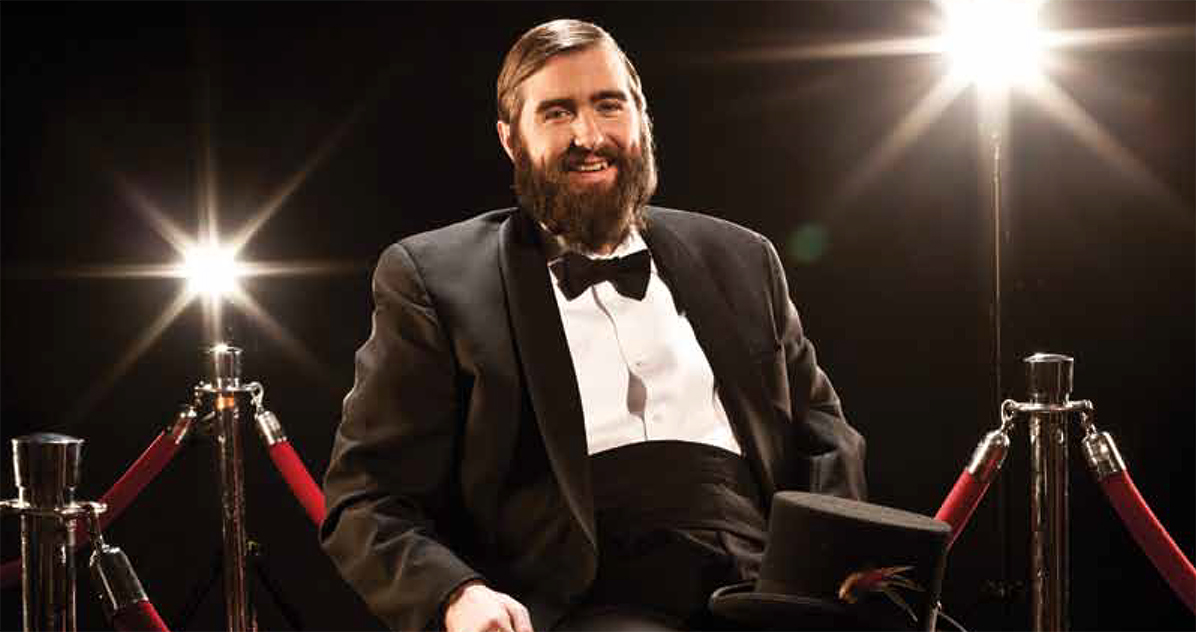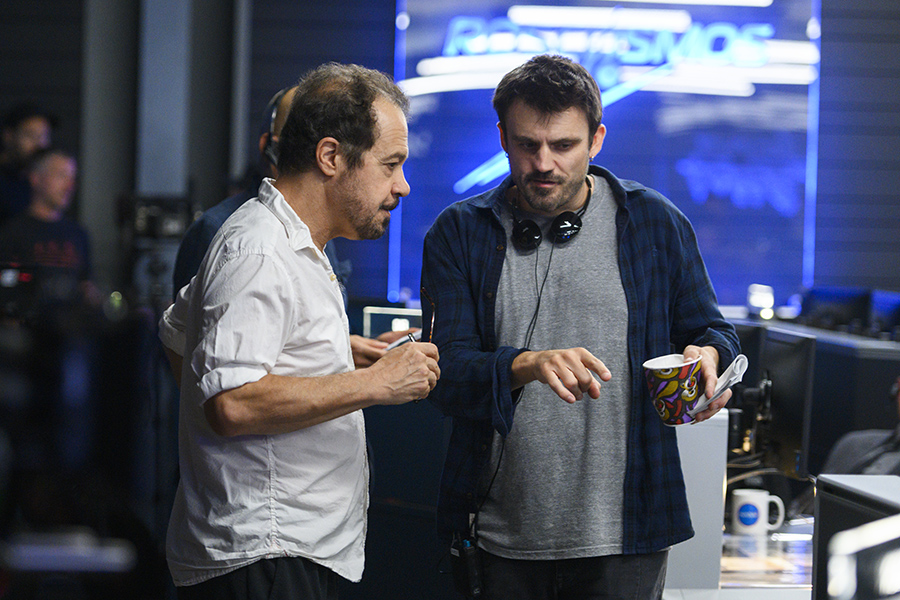It’s not often that you’ll see a wheelchair user in a TV show or film. It’s even more rare to see a disabled actor on screen who actually uses a wheelchair in real life. However, in the new Netflix hit show Away about a three-year mission to Mars, not only will you see authentic wheelchair users onscreen, but also a realistic representation of everyday life for people with disabilities.
I was fortunate enough to be granted an interview with Andrew Hinderaker, the visionary creator behind Away. We discussed his inspiration for the show, the work that went into the accurate representation of disability and wheelchair use on-screen, and the future of disability representation in the media. And because I’m an accessible travel writer, of course I had to ask about wheelchair users in space!
Below is a condensed version of my interview with Mr. Hinderaker. You can read the full interview at www.spintheglobe.net.
Sylvia Longmire: The starting point for Away was an Esquire article by the same name about Scott Kelly’s extended stay at the International Space Station, and your physical separation from a partner during a severe illness. How did these events combine in your mind to create what we see now in Away?
Andrew Hinderaker: The entire article from Esquire magazine was extraordinary and moving. But the moment that struck me the most was when Scott Kelly is up in the International Space Station and learns that his sister-in-law, Gabby Giffords, has been shot. I just thought that it was so profoundly moving to read about Scott and his trying to negotiate that moment from a distance. And for me it felt really profound and something I connected to personally.
My partner and I have been together for over 15 years, and a lot of our relationship has been long distance and we were physically apart. I was in Chicago opening a play when she was diagnosed with a really serious illness, really serious disease. So that experience described in the in the article — one moment you’re somewhere doing the thing that you feel like you’re put on Earth to do, And then the next moment something catastrophic happens to someone you love and you want to be home. That was just something I connected to profoundly and was grappling with and wanted to explore, so I knew that that would be a fundamental part of the series as well.
SL: One of the main characters, Matt Logan, played by Josh Charles, unexpectedly becomes a wheelchair user early in the season. The amount of detail shown regarding his transition is amazing, and frankly quite surprising, to many of us in the wheelchair community because we’re not used to seeing that level of detail in a show. What was the process for including those details, and why do you think it’s important to show them?

Michael Patrick Thornton plays Dr. Putney in Away. Photo by Saverio Truglia/saveriotruglia.com for New Mobility.
AH: It is really important to me, and it’s important to the show, and it just means a tremendous amount if that was in any way successful. I started my career as a playwright in Chicago and the first theater company — and really the first artist that took a chance on me and produced my play — is an extraordinary theater and TV/film artist and actor named Michael Patrick Thornton. He plays Hilary’s psychiatrist, Dr. Fred Putney. Mike gave me my first production and was one of the lead characters in that play. That play kind of launched my career, and I went to New York.
Mike is a wheelchair user, and he and I have closely collaborated since 2008. I mention him both because I have to credit him in terms of — if I have any ability to write stories that feel authentic and real and, and true and lived, it’s in large part because of my close collaboration with Mike. I think that’s probably where that philosophy was crystallized that carried through. That play, the character that Mike played is a wheelchair user. So I think that was just sort of my artistic philosophy, and that’s a philosophy that I hope is present in every aspect of the show, Away. We did an immense amount of research on the astronauts, on space exploration, and so it should be no less detailed and no less authentic than when you’re exploring the aftermath of a stroke.

Away (left to right) Director Edward Zwick and Writer Andrew Hinderaker on the set of Away. Photo by Diyah Pera/Netflix
SL: Do you think that level of authenticity can help other show creators and producers realize the value of it when it comes to casting actors with disabilities?
AH: I hope so. With the role of Matt that Josh Charles plays, you know it’s quite complex because when the series begins, the character is not a wheelchair user and then, subsequently, is. However, we have a couple of languages in the show of both flashbacks and magical realism that are pretty present in the first season. The plan is actually even more present as season two and season three progress. But my opinion is if the character is a wheelchair user — and barring complexities like I’m talking about with Matt’s character — they should always be cast with actors who use wheelchairs, unequivocally, end of sentence, period.
SL: Both he and Emma Green, the mission commander played by Hilary Swank, go through significant emotional struggles in parallel — even though she’s in space and he’s on earth — related to inadequacy, fear, and isolation, but for very different reasons. Do you think that these parallel struggles, particularly with the insider look into Matt’s life as a new wheelchair user, can help audiences empathize a bit more with wheelchair life?
AH: That’s the aspiration. Absolutely. There’s a scene in which Alexis, Matt’s daughter, is talking to the family psychiatrist I mentioned, Dr. Putney, who is played by Mike. Given that Mike is a wheelchair user, Putney, then, is a wheelchair user. Alexis asks the psychiatrist if it’s hard being in a wheelchair, and his response is that it’s sometimes hard being in a world that wasn’t designed for chairs. That came out of conversations as well, and enhanced empathy is the aspiration in any storytelling. I think it depends who the audience is. Often in the audience, certain members are folks like myself who might otherwise not appreciate the experiences that someone has gone, or is going, through. Part of my responsibility as a human being is to understand that, and to understand the ways in which the world wasn’t designed for other groups of people and to try to rectify that. To me that begins with empathy — you can’t have empathy if you don’t have authentic representation.
SL: On a bit of a more whimsical track, let’s talk wheelchairs in space! The astronaut crew is incredibly diverse, which sends the message that whether you’re Black, white, Chinese, Indian, male or female, you can dream of going into space. Can you can talk about the diversity of the cast, and do you see wheelchair users or people with other disabilities eventually in space, whether in reality or on screen?
AH: I love this question so much. The diversity of the show absolutely was intentional, but again was sparked from something I read in that article. Because in addition to focusing on Scott Kelly, it also talks about the International Space Station itself, and its rather improbable alliance between all of these countries that might not normally get along and came together because they had to. They wouldn’t have been able to build this laboratory in the sky without each other’s expertise and money. That is generally accepted as the analogue for a mission to Mars: that if the world can figure out way to work together, that’s how we get there. So it was vital that this show embody that. All I can say, intentionally cryptically, is that in season two — should we be lucky enough to get it, there’s not been a season ordered — the question of wheelchair users in space is one we intend to explore.
** This post was originally published on https://www.newmobility.com/2020/09/wheelchair-users-in-space-an-interview-with-the-creator-of-away/


